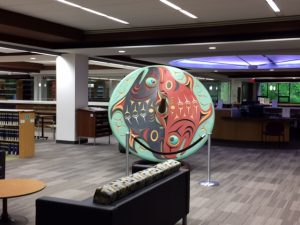Much is being written and discussed in the local and national news and social media about the final results (see Elections BC) of the 2017 BC provincial general election: Liberals 43 seats, NDP 41, Greens 3. Christy Clark was Premier as her party won the most seats, 43 out of 87, but with the NDP-Green agreement inked and signed, her government could, and did, lose on a confidence vote in the Legislature. By convention, only certain pieces of legislation, the Throne Speech and budgets, can have confidence motions and therefore votes, attached to them.
All elected MLA’ s were sworn in the week of June 5th. Cabinet was sworn in June 12. The Premier stated in her May 30 press conference “we have a duty to meet the house and test its confidence.” She acknowledged her party will likely not last long. Pundits predict her government will fail on either the throne speech or a budget bill (which must be tabled and passed no later than September). B.C.’s Lieutenant-Governor Judith Guichon will then have the option of calling an election or asking NDP leader John Horgan to form a minority government.
The Legislative Assembly, 1st session of the 41st Parliament, sat June 22, for the election of a speaker (Steve Thomson, Kelowna-Mission who as of June 29 is no longer speaker) and the reading of the Speech from the Throne. On June 26 the liberal government introduced two bills which were negatived on motion (did not pass first reading) and will not be part of the official record. The NDP also introduced the confidence motion on the throne speech. On June 29, the Legislative Assembly sat for the vote on the confidence motion. The Liberal government was defeated, thus the lost confidence. Premier Clark then tendered her resignation to the the Lieutenant Governor and asked for the house to be dissolved, which would have triggered an election. The only other option available was to give the NDP the opportunity to govern. The Lieutenant Governor upon the advice of experts and in keeping with convention, asked John Horgan if he had the confidence of the house to form government. His reply – yes.
Sources are available that discuss conventions, confidence motions, the conduct of legislative assemblies, the duties of the Lieutenant-Governor, or minority governments. Below is a select list of sources including legal treatises, parliamentary procedure handbooks, news media, and journals. Feel free to contact lawref@uvic.ca about these and other sources.
Andrew Heard, Canadian Constitutional Conventions: the Marriage of Law and Politics (Toronto: Oxford University Press Canada, 1991) Law Library KF4482 H43
D. Michael Jackson and Philippe Lagassé, Canada and the Crown : Essays on Constitutional Monarchy (Montréal : McGill-Queen’s University Press, 2013. McPherson Library JL15 C35
Frank Cranmer & Sir William McKay, Erskine May’s treatise on the law, privileges, Proceedings and Usage of Parliament, 23rd ed. (London: LexisNexis, 2004) Law Library KD4354 A5M39 2004
Canada. Parliament., House of Commons. Special Committee on Reform of the House of Commons. Report of the Special Committee on Reform of the House of Commons. (Ottawa: Queens Printer, 1985). Law Library KF4483 L4C3565 1985
Alistair Fraser, William Foster Dawson, & Holtby, John A., Beauchesne’s Rules and Forms of the House of Commons of Canada, with Annotations, Comments and Precedents (Toronto: Carswell, 1989). Law Library Reference KF4483 R8C36 1989.
Marc Bosc and Audrey O’Brien, House of Commons Procedure and Practice, 2nd ed, (Ottawa: House of Commons, 2009) Online and McPherson Library Reference, JL164 C26 2009.
Standing Orders of the House of Commons, Including the Conflict of Interest code for Members (Ottawa : Publishing and Depository Services, 2010). Online
Peter W. Hogg, Constitutional Law of Canada, 5th ed. suppl. (Scarborough, Ont. : Thomson Carswell, c2006). Law Library Reserve KE4219 H63 2006
E. George MacMinn, Parliamentary Practice in British Columbia, 4th ed. (Victoria : Queen’s Printer, 2008). Law Library Reference KEB470 A33M33 2008.
Ronald I. Cheffins, Constitutional Process in Canada, (Toronto, McGraw Hill, 1989) Law Library KF4482 C5
Library catalogue subject keyword searches:
” Parliamentary Practice Canada ” or ” Parliament Rules and Practice” and Canada or Great Britain
News Sources: Globe and Mail, National Post, Times Colonist, Tyee.
Select Journals:
Canadian Parliamentary Review, free online
Journal of Parliamentary and Political Law (Westlaw)
Review of Constitutional Studies (Library e-journal, print also available)
Post originally written June 22, updated July 1.

